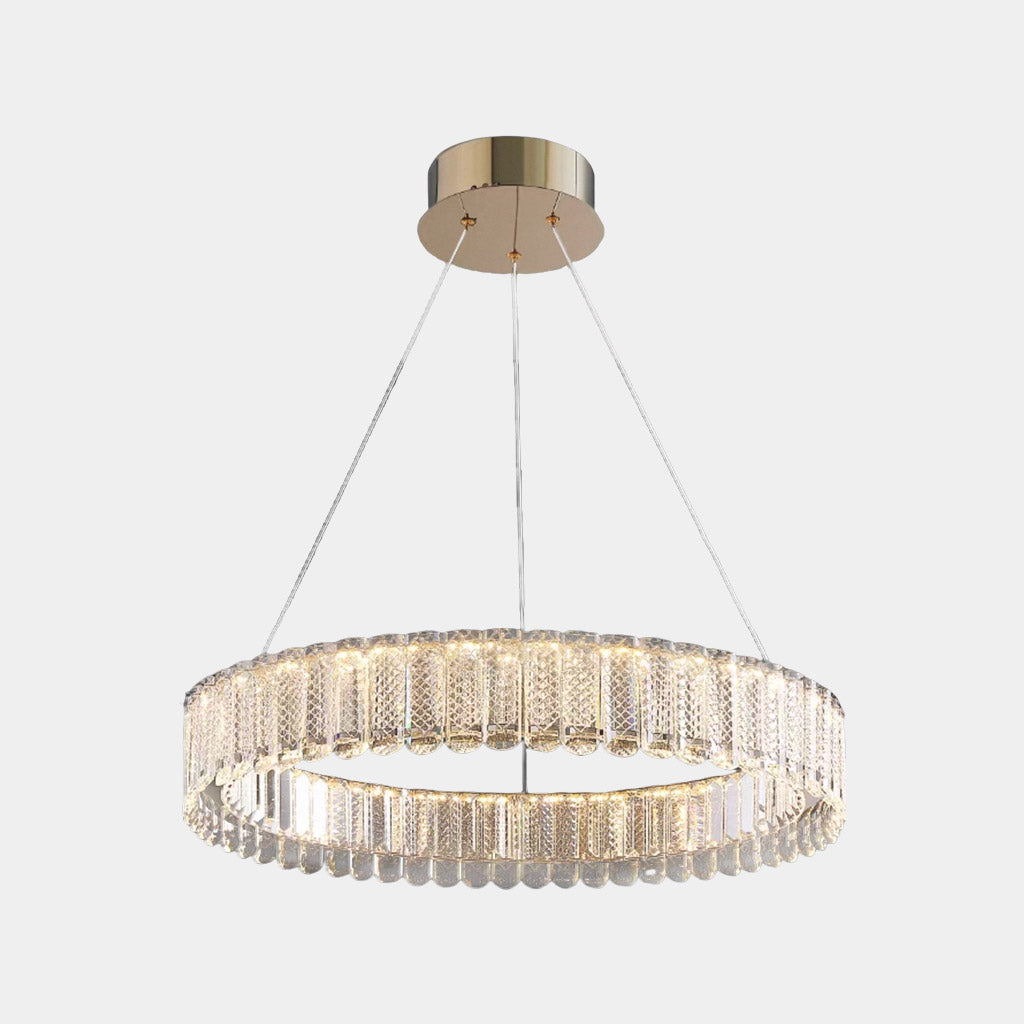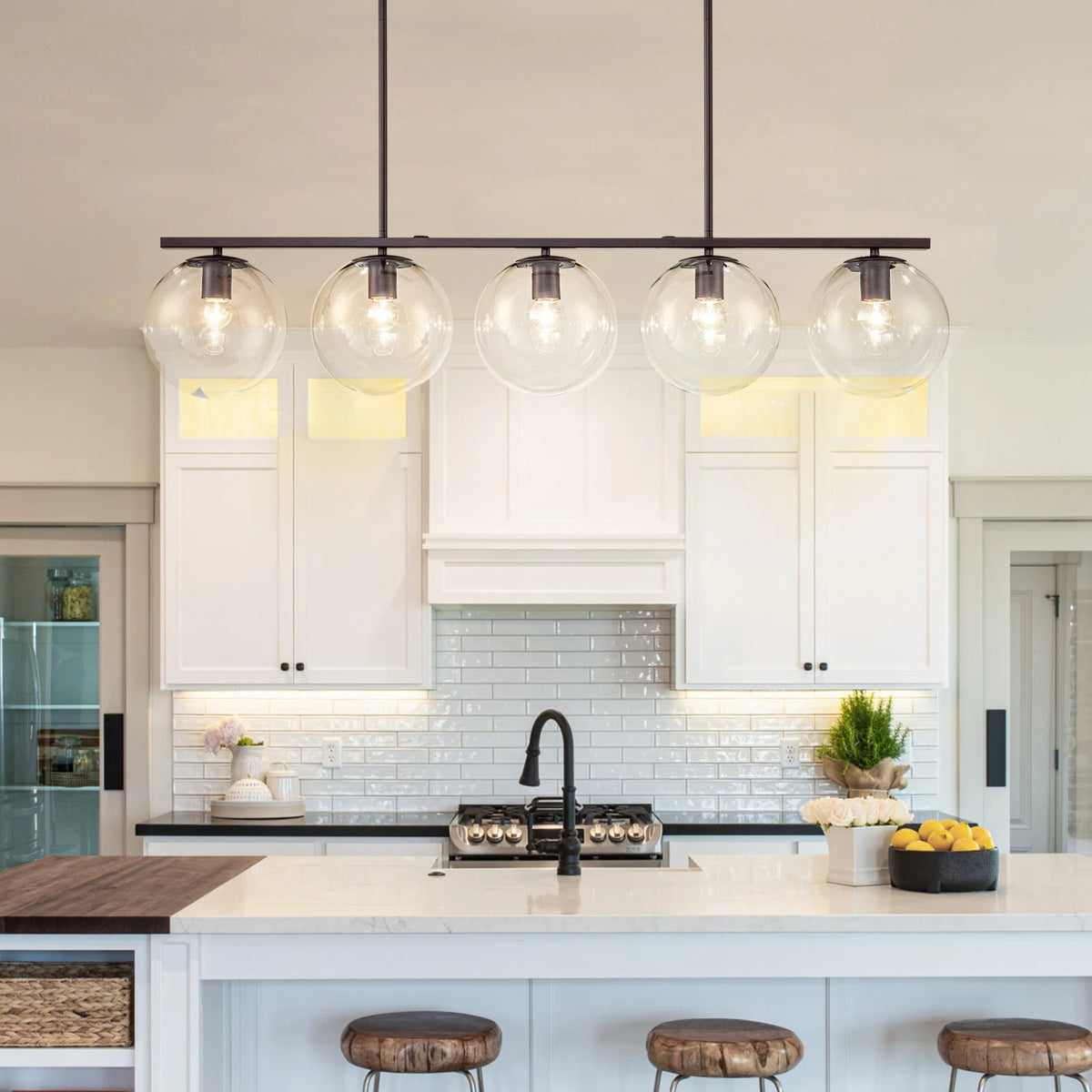Can a Pendant Light Work in Homes With Limited Height?
Wiki Article
How to Pick the Perfect Pendant Light to Boost Your Inside Design
Selecting the perfect pendant light needs careful consideration of numerous aspects. The design must straighten with the general decor, while size plays an important duty in ensuring correct percentage. Shade and finish options can enhance aesthetic appeal. Furthermore, assessing light output is very important for performance - Pendant Light. Understanding these elements can change an area, creating an inviting environment. The procedure entails even more than just aesthetic appeal; there are functionalities that need to likewise be addressed.Understanding Various Necklace Light Styles
Pendant lights can be found in a selection of designs, each offering special aesthetic and functional benefits. From commercial designs that feature subjected bulbs and metal surfaces to classy glass fixtures that evoke a sense of sophistication, the choices are huge. Contemporary pendant lights often emphasize minimalist shapes and tidy lines, while vintage-inspired styles might integrate intricate detailing and cozy tones.For those seeking a rustic beauty, fixtures made from all-natural products like wood or rattan provide a comfy feeling. Furthermore, multi-light necklaces can function as declaration pieces, integrating numerous bulbs in a solitary layout for dramatic effect.
Each design contributes differently to a space, affecting the general setting and character. Comprehending these varied necklace light styles permits homeowners and developers to make enlightened choices that straighten with their indoor layout vision, boosting both performance and visual allure in their settings.
Establishing the Right Size for Your Area
When choosing a pendant light, accurately gauging the ceiling elevation is vital for accomplishing the ideal balance in an area. Furthermore, computing the range of the component in connection with the surrounding room warranties that the light matches as opposed to overwhelms the design. These variables play an important role in creating an unified interior environment.Step Ceiling Height
To achieve a visually pleasing design, gauging ceiling elevation is essential for choosing the appropriate size of necklace light. The height of the ceiling straight affects the scale and proportion of the lights fixture. In spaces with standard eight-foot ceilings, pendant lights ought to commonly spend time 30 to 36 inches over the surface area below, such as a dining table or kitchen island. For greater ceilings, adjustments have to be made as necessary, as a greater installation can produce a more remarkable effect. When figuring out the excellent elevation, it is essential to reflect on the overall space dimensions and layout. Exact measurements aid guarantee that the necklace light not just enhances the area's style yet likewise provides ample illumination without frustrating the area.Determine Component Scale
Selecting the appropriate dimension for a lighting component is essential for creating harmony in an area's style. To determine fixture scale, one need to take into consideration the dimensions of the area. An usual guideline involves adding the space's size and size in feet, which provides an ideal diameter in inches for a necklace light. As an example, an area determining 10 feet by 12 feet recommends a component size of about 22 inches. In addition, the height of the ceiling plays an important function; taller ceilings might accommodate larger components. Making certain the pendant hangs at an appropriate elevation-- generally 30 to 36 inches over surfaces-- more improves functionality and aesthetic allure. Properly scaled fixtures can change an area, making it feel inviting and well-coordinated.Considering Shade and Complete Alternatives
When picking a pendant light, the interplay of shade and surface can significantly influence the total visual of a room. Collaborating the light's color scheme with existing decor ensures a harmonious layout, while the selection of surface product can improve structure and style. Thoughtful factor to consider of these components is important for accomplishing a natural look in interior decoration.Color Scheme Coordination
Color combination sychronisation plays a vital function in achieving a harmonious interior design, specifically when choosing pendant lights. Picking a necklace light that matches the existing color scheme improves the total aesthetic. As an example, a light with warm tones can produce a comfy atmosphere in a space full of natural colors, while cooler tones might integrate effectively with a modern-day, minimal scheme. It is vital to consider the leading colors in the space, guaranteeing that the pendant light either mixes effortlessly or supplies a striking comparison. Additionally, including accent shades from the scheme can tie the layout together, creating a natural appearance. Ultimately, thoughtful shade coordination raises the visual influence of the pendant light within the interior decoration plan.Complete Product Considerations

The selection of finish products for necklace lights considerably influences the total design aesthetic of an area. Various surfaces, such as matte, glossy, or distinctive, can develop varying visual effects. A refined metal coating may stimulate a modern, commercial environment, while a matte or combed coating can offer a softer, much more natural feel. Shade options, varying from traditional blacks and whites to vibrant colors, also play an important duty in balancing with existing style. Furthermore, products such as glass, wood, or ceramic can improve the necklace's character and complement surrounding components. Eventually, picking the right surface product guarantees the pendant light not just illuminates however additionally enhances the room's layout narrative.
Evaluating Light Output and Performance
Light output and capability are fundamental variables in selecting the excellent pendant light for any type of room. Evaluating the brightness of a necklace light entails comprehending lumens, which measure the overall light produced. A higher lumen matter commonly indicates a brighter light, vital for jobs such as reading or cooking. In addition, the shade temperature level, determined in Home Page Kelvin, influences the ambiance; warmer tones develop a cozy atmosphere, while cooler tones promote performance.Functionality extends beyond brightness to consist of the fixture's style and positioning. Flexible necklaces can offer flexible illumination for different activities, while taken care of choices include a declaration to the decoration. Considering the height at which the pendant will hang is vital, as it influences both light distribution and security. Eventually, a well-assessed light result and performance will ensure that the chosen necklace light fulfills both practical and visual demands in the designated space.
Matching Necklace Lighting With Your Interior Decoration Motif
Exactly how can one guarantee that pendant lights boost the general interior decoration motif of an area? The key hinge on choosing fixtures that reverberate with the well browse around this site established aesthetic. For example, in a minimal setting, basic and sleek layouts in neutral colors can develop a cohesive appearance. Conversely, a vintage-themed room might take advantage of luxuriant pendant lights, featuring intricate styles or cozy tones that stimulate fond memories.In addition, considering the material and surface of the pendant light is crucial. Steels like brass or copper can add a touch of style to a contemporary room, while timber components might complement rustic interiors.
Shade harmony also plays a substantial function; choosing shades that line up with the space's palette guarantees that the illumination really feels integrated instead of out of area. Ultimately, the appropriate necklace lights need to not only light up but additionally function as a stylistic extension of the overall design, enhancing the ambiance and personality of the room.
Installment and Placement Tips for Optimum Influence

In larger rooms, consider utilizing bigger collections or necklaces to stop them from really feeling shed in the room. For an open-concept format, aligning the pendants with various other design aspects, like counter tops or furnishings lines, fosters communication. Additionally, dimmer switches can enhance versatility, enabling adjustable setting. Eventually, thoughtful installation and positioning of pendant lights can change the aesthetics and capability of any kind of indoor their explanation design.
Regularly Asked Concerns
What Are the Best Products for Pendant Lighting?
The most effective materials for necklace lights include glass for style, metal for durability, and material for heat. Each material provides one-of-a-kind aesthetics, permitting designers to produce flexible lights services that boost numerous indoor styles and ambiences.
Just how Do I Keep and Clean Pendant Lighting?
Maintaining and cleaning up pendant lights includes normal dusting, utilizing a wet cloth for surfaces, and utilizing mild cleansers for glass components. Regular checks for loosened installations assure safety and extend the life-span of the components.
Can Necklace Lighting Be Dimmable?
The question of whether necklace lights can be dimmable matters for many. Numerous designs offer dimmable features, enabling users to readjust illumination, improving atmosphere and performance. Compatibility with dimmer switches is important for peak performance.What Is the Life-span of Regular Pendant Light Bulbs?
The lifespan of regular pendant light bulbs differs substantially. Incandescent light bulbs last about 1,000 hours, while compact fluorescent lights (CFLs) can last 7,000 to 15,000 hours. LED light bulbs provide the longest life expectancy, reaching up to 25,000 hours or more.Are Pendant Lights Suitable for Outdoor Usage?
Pendant lights can be ideal for outside usage, however they need to be specifically created for such atmospheres. Weather-resistant materials and appropriate installment are vital to assure toughness and safety and security versus aspects like moisture and wind.Color combination coordination plays an essential role in achieving an unified interior style, particularly when selecting pendant lights. The selection of coating products for necklace lights significantly influences the total style visual of a room. Light output and performance are fundamental variables in selecting the suitable pendant light for any type of space. Evaluating the illumination of a pendant light involves comprehending lumens, which gauge the overall light produced (Pendant Light). Exactly how can one guarantee that pendant lights boost the overall interior style motif of a space?
Report this wiki page